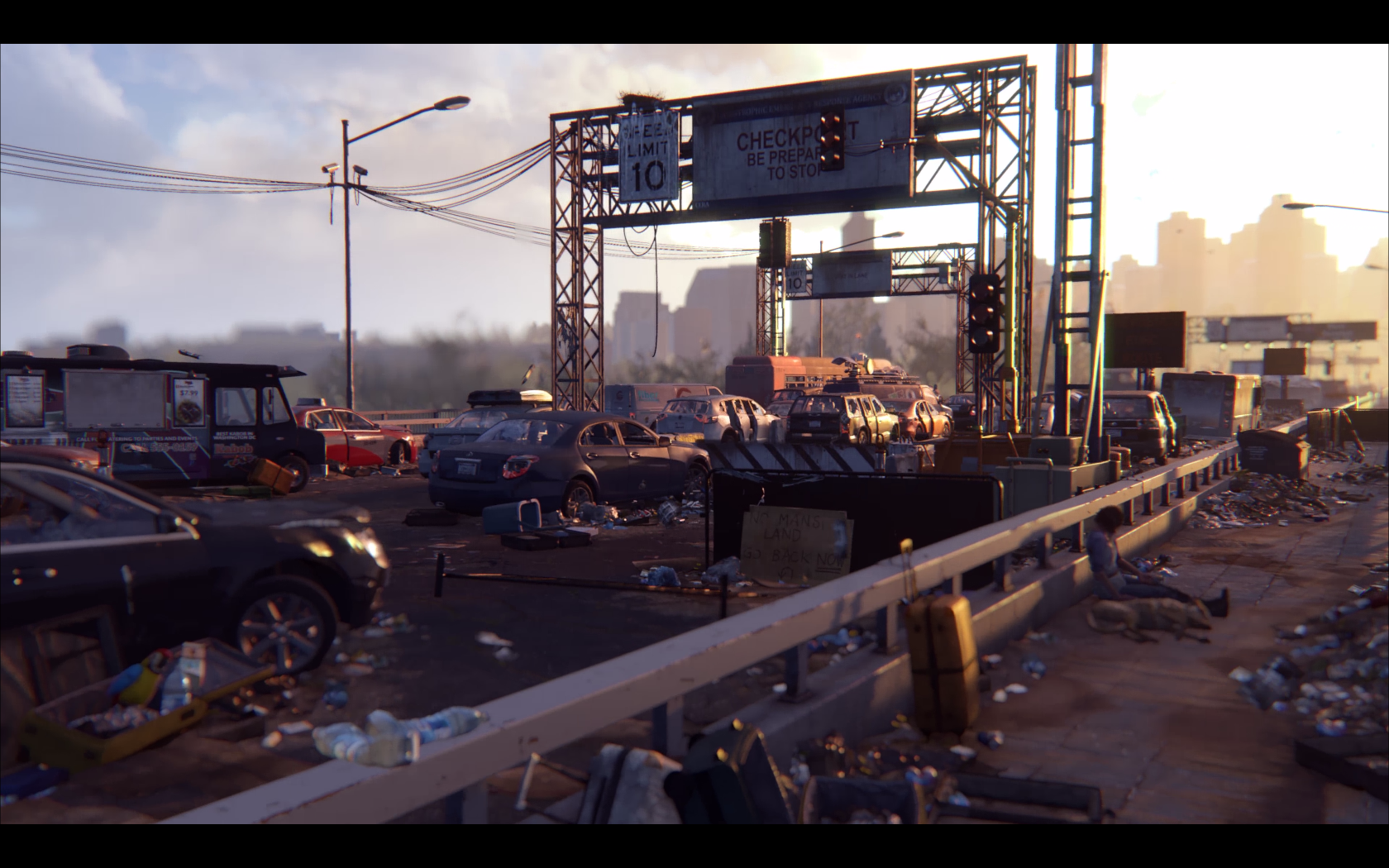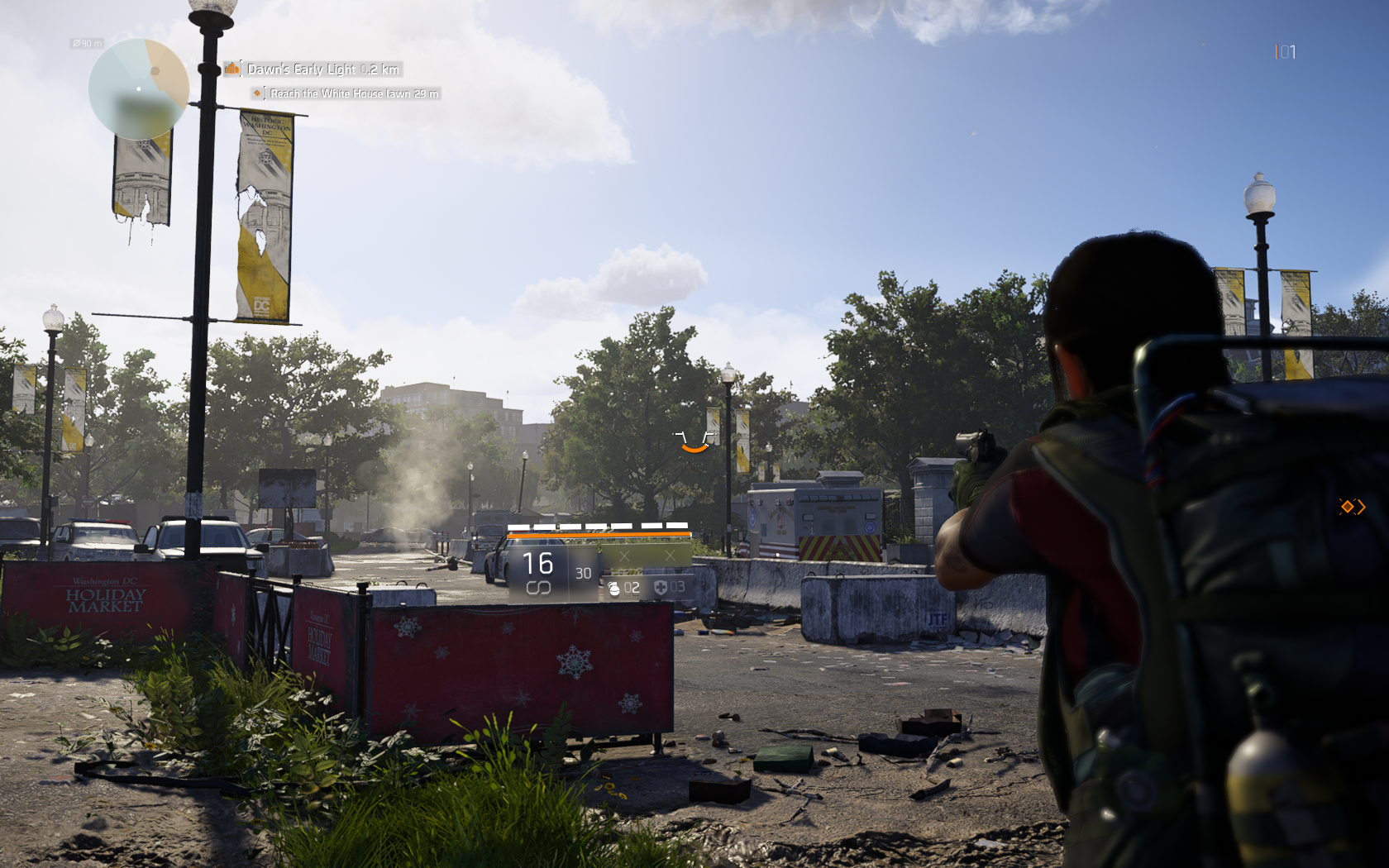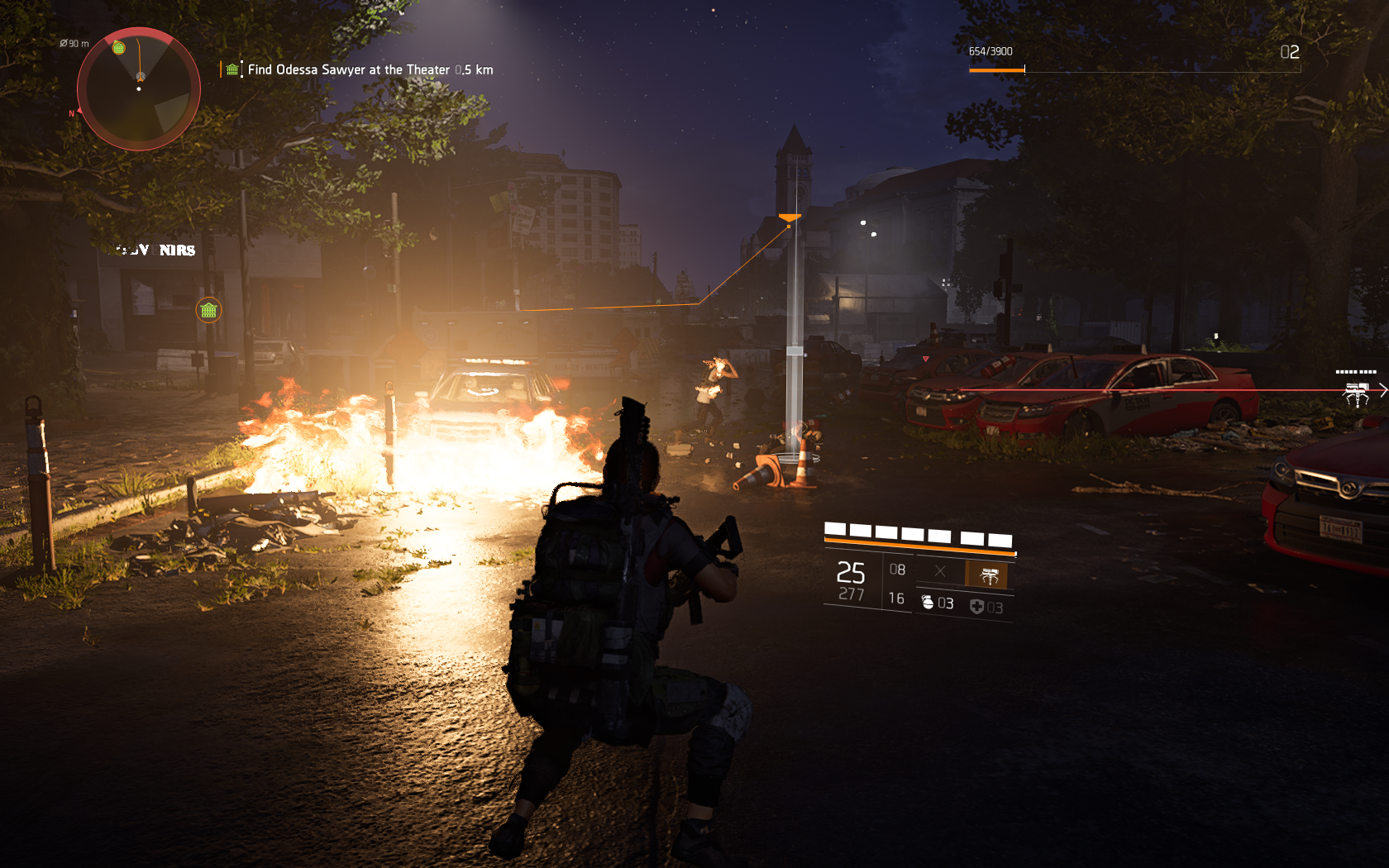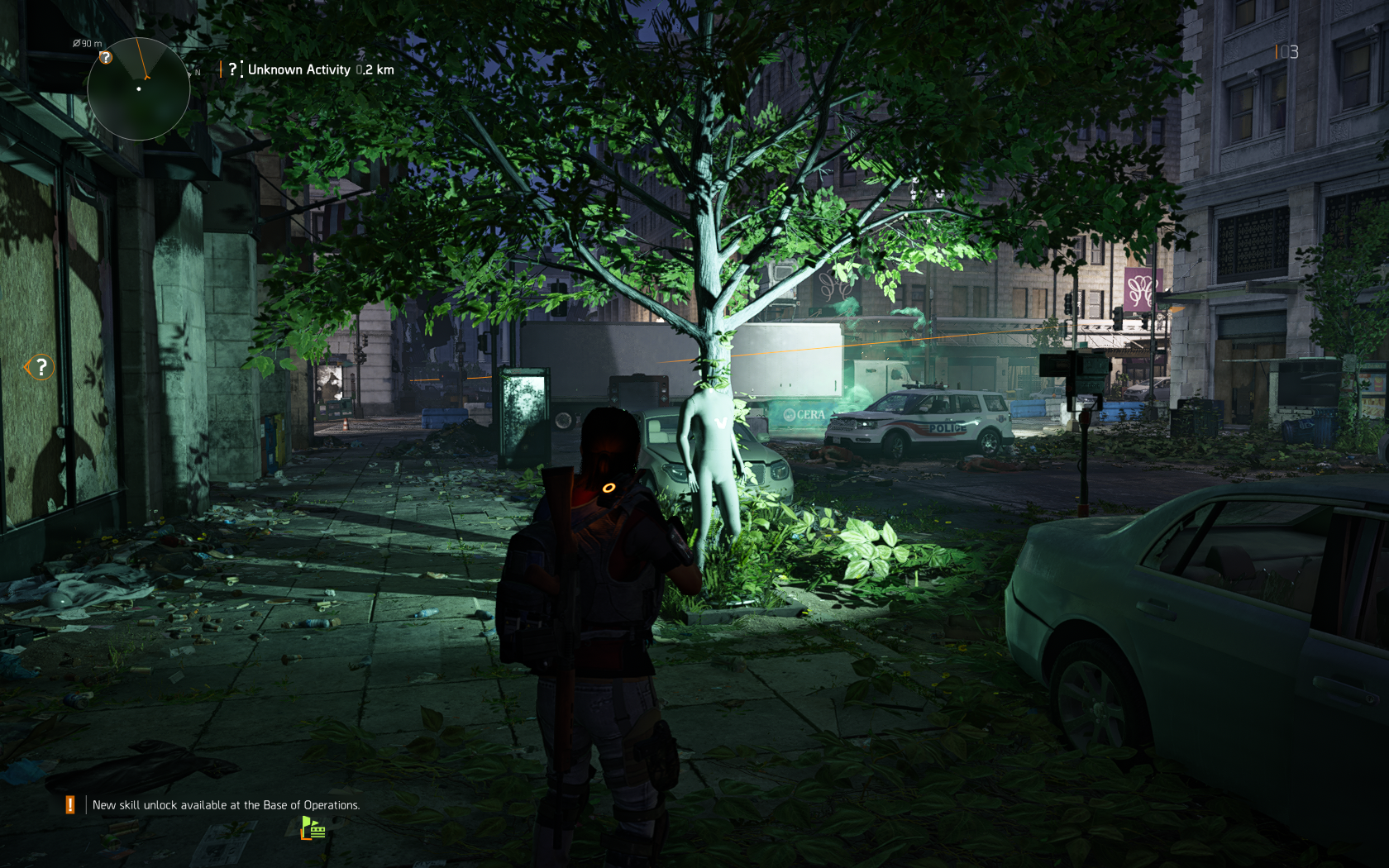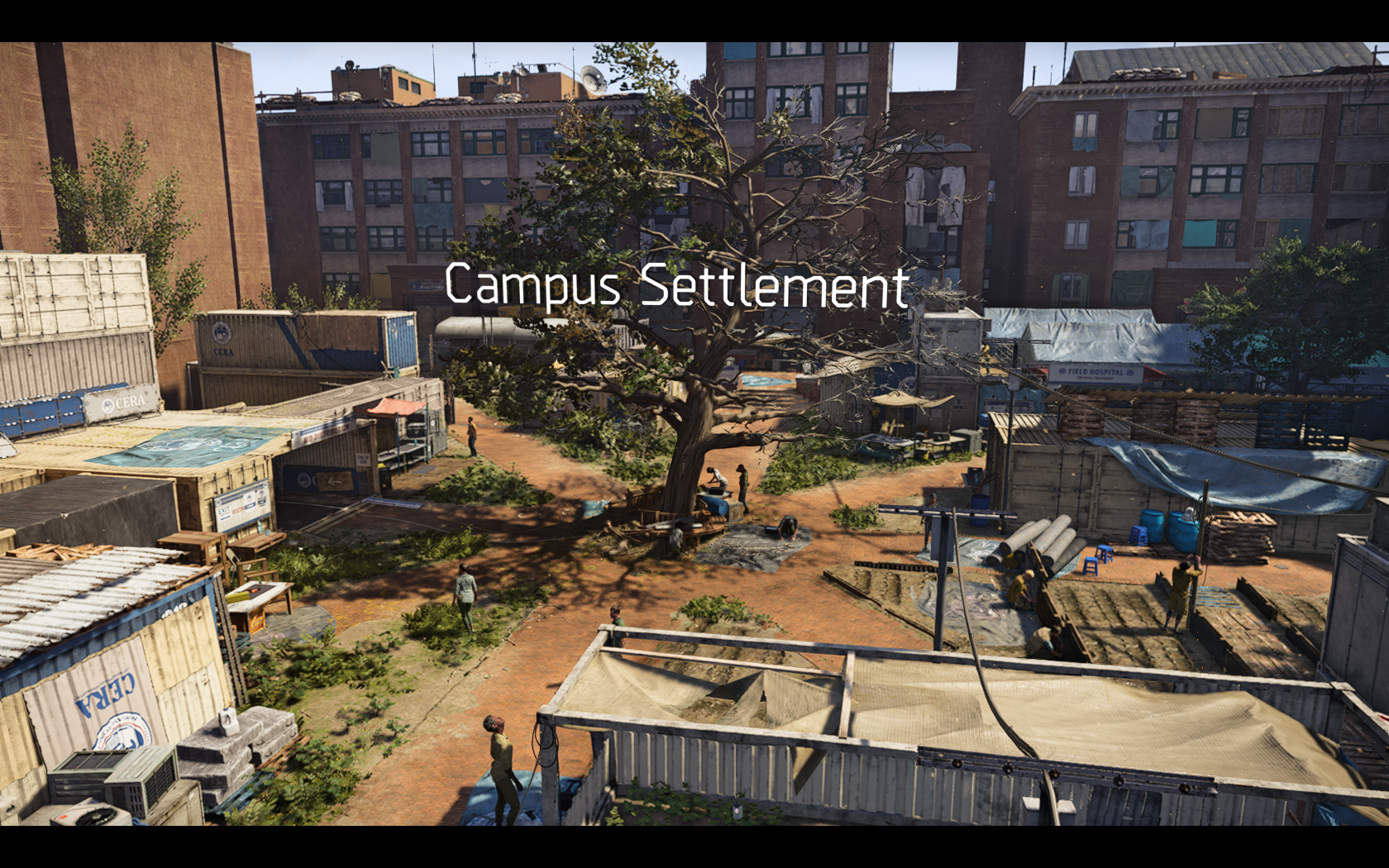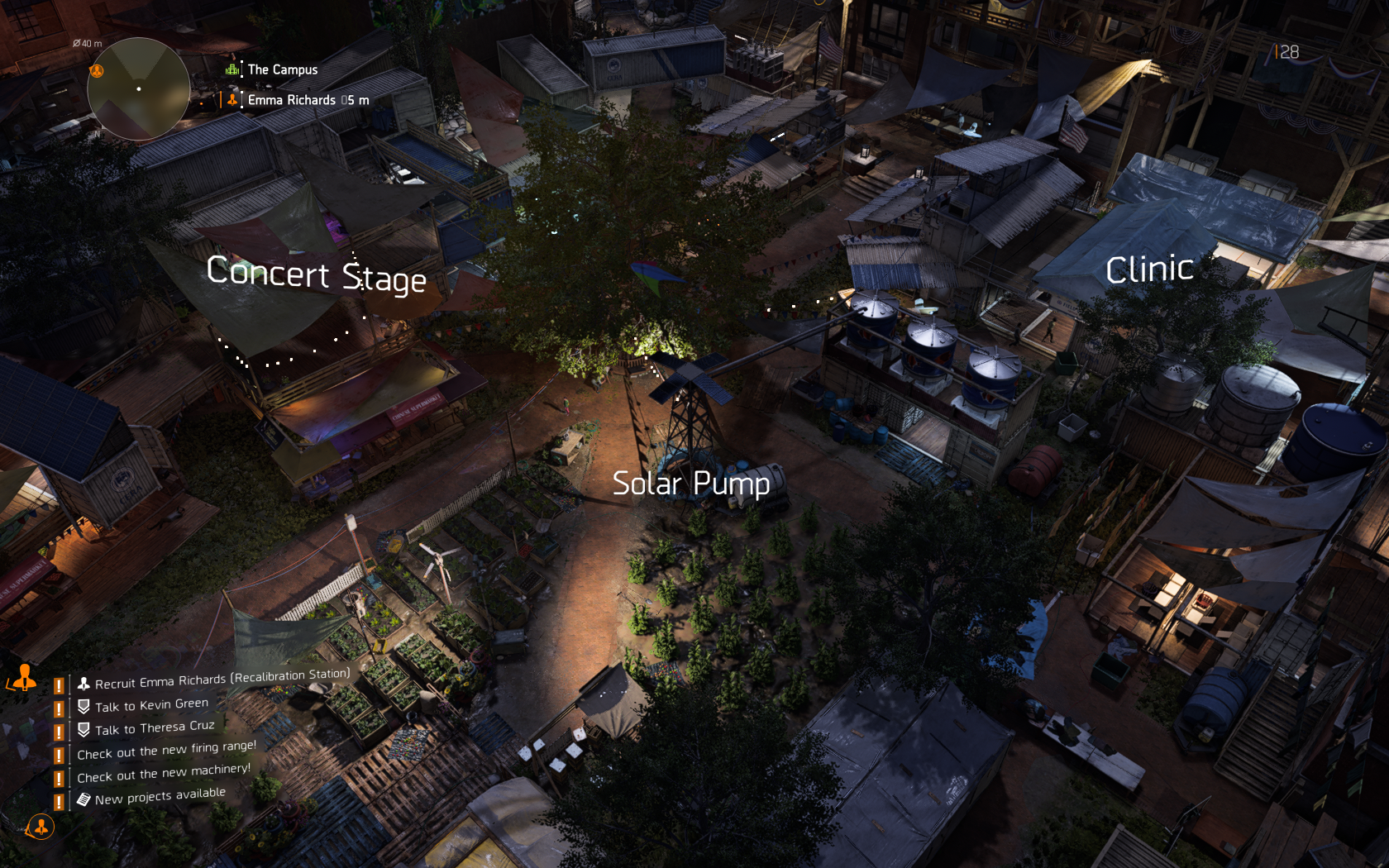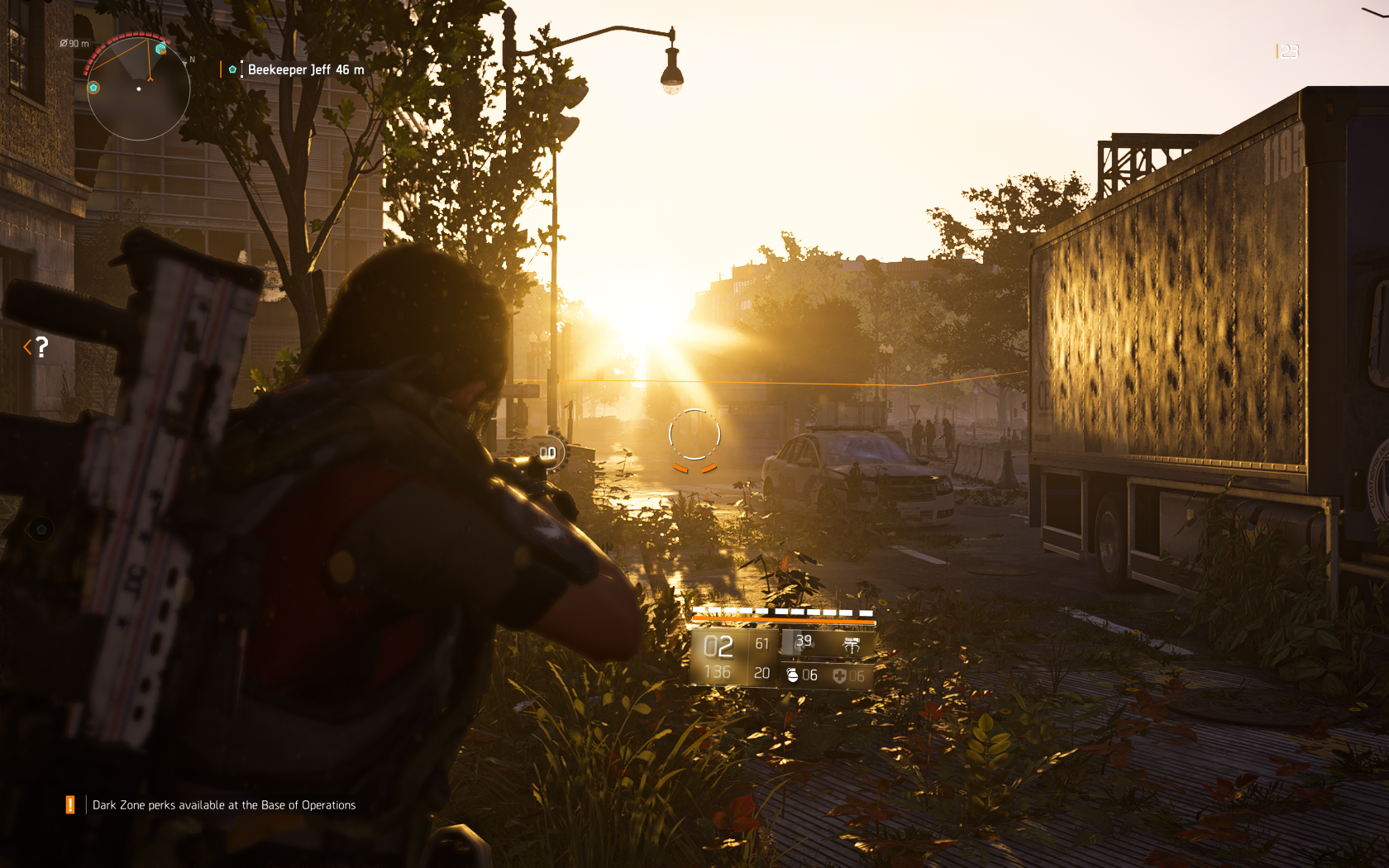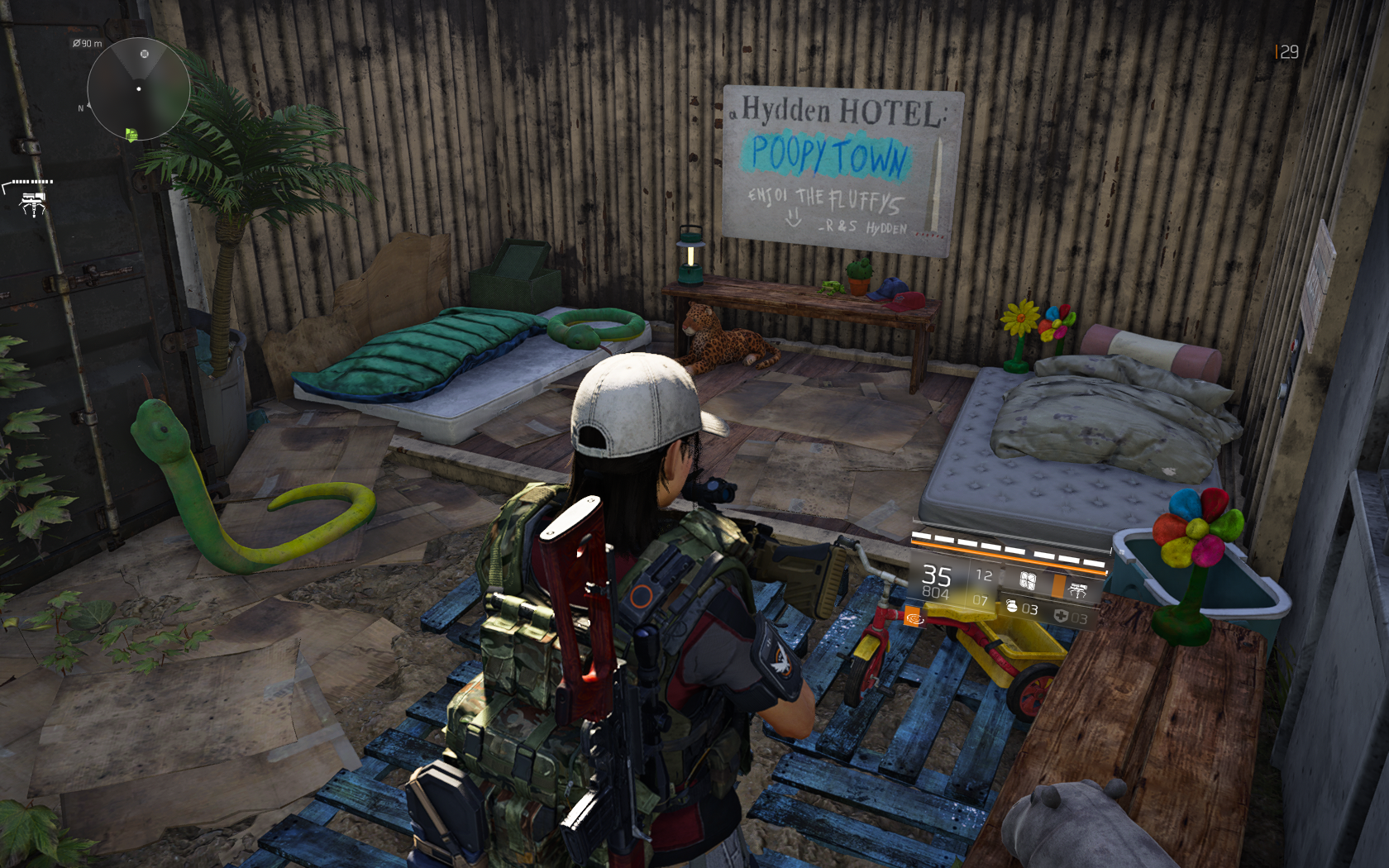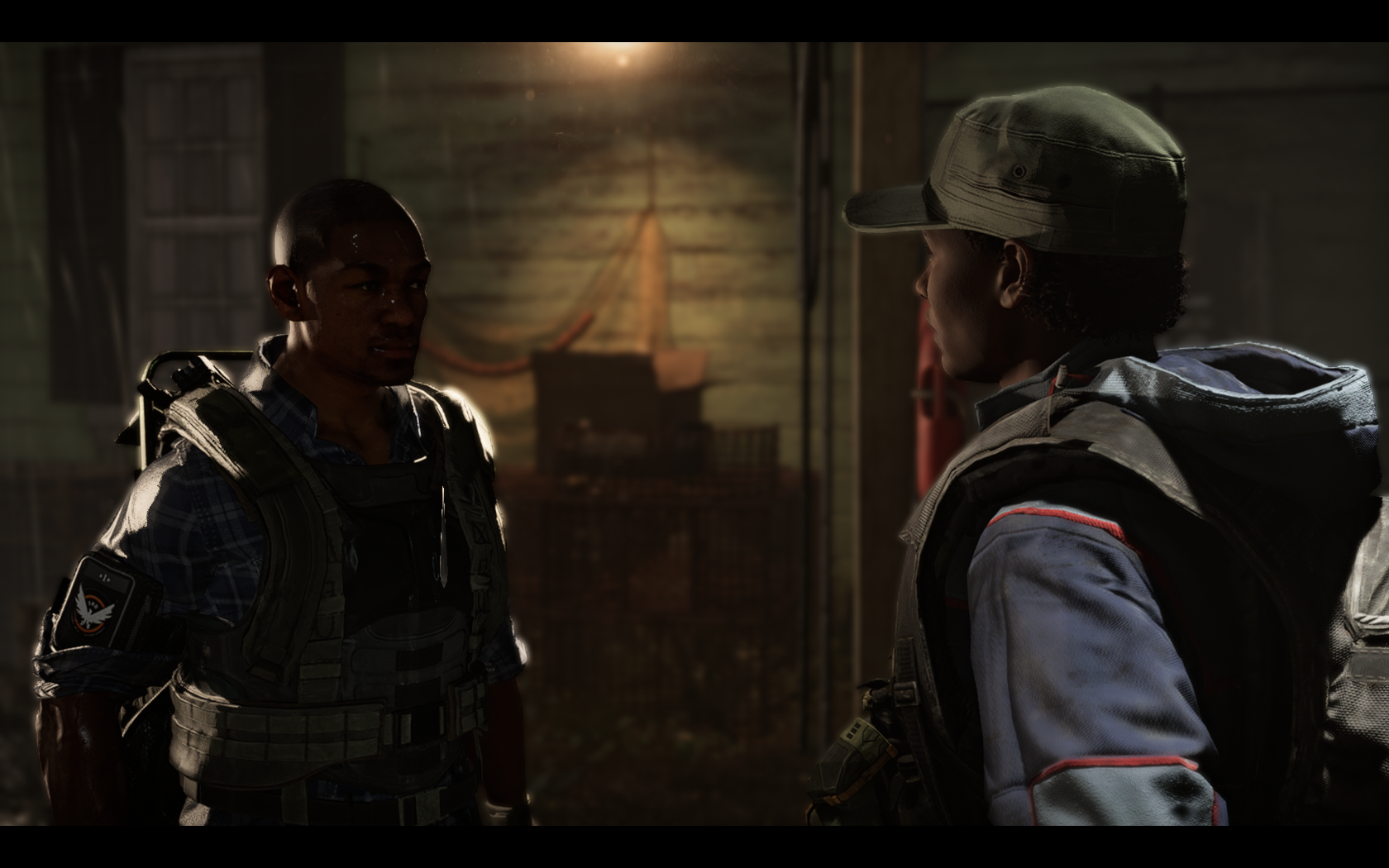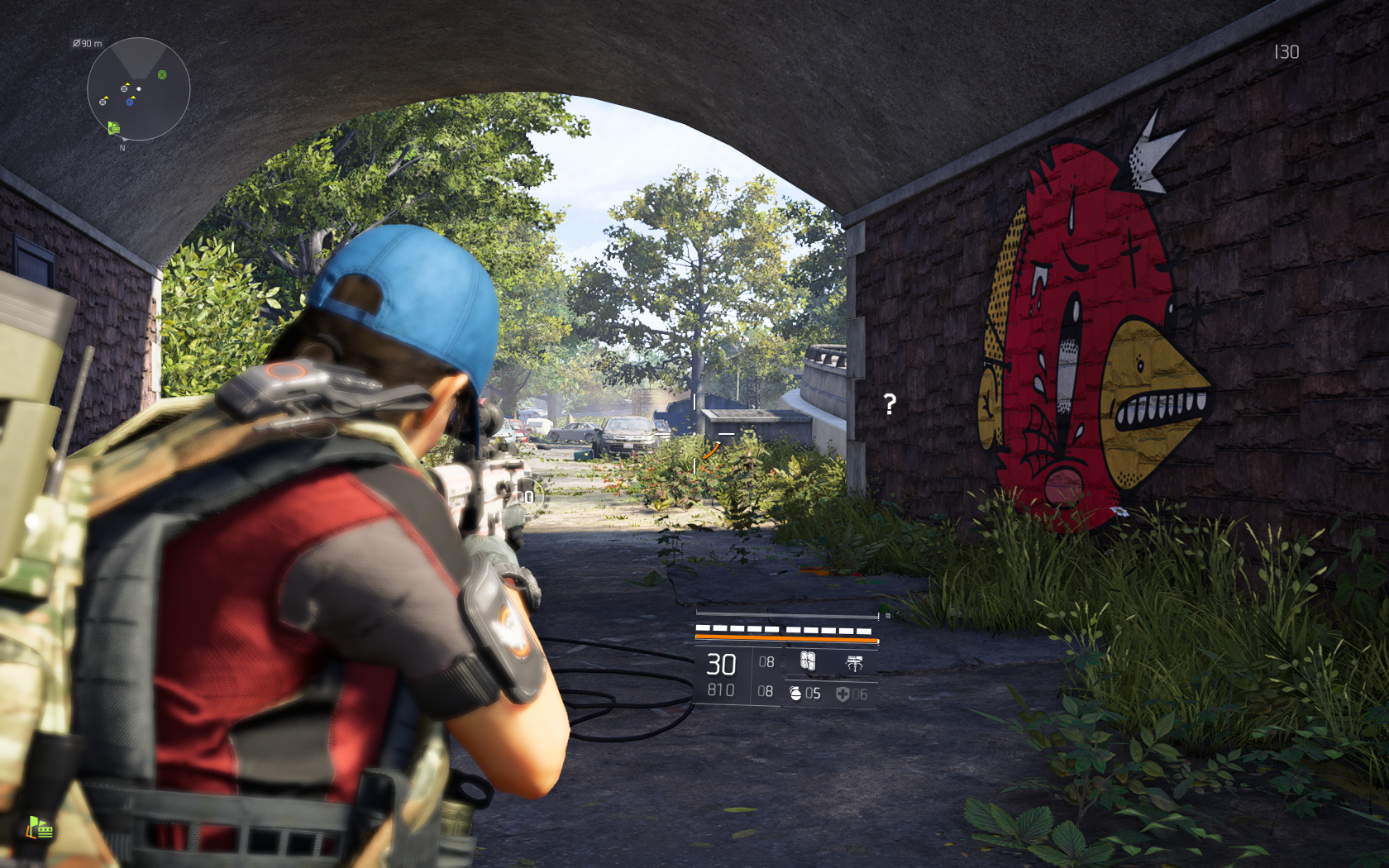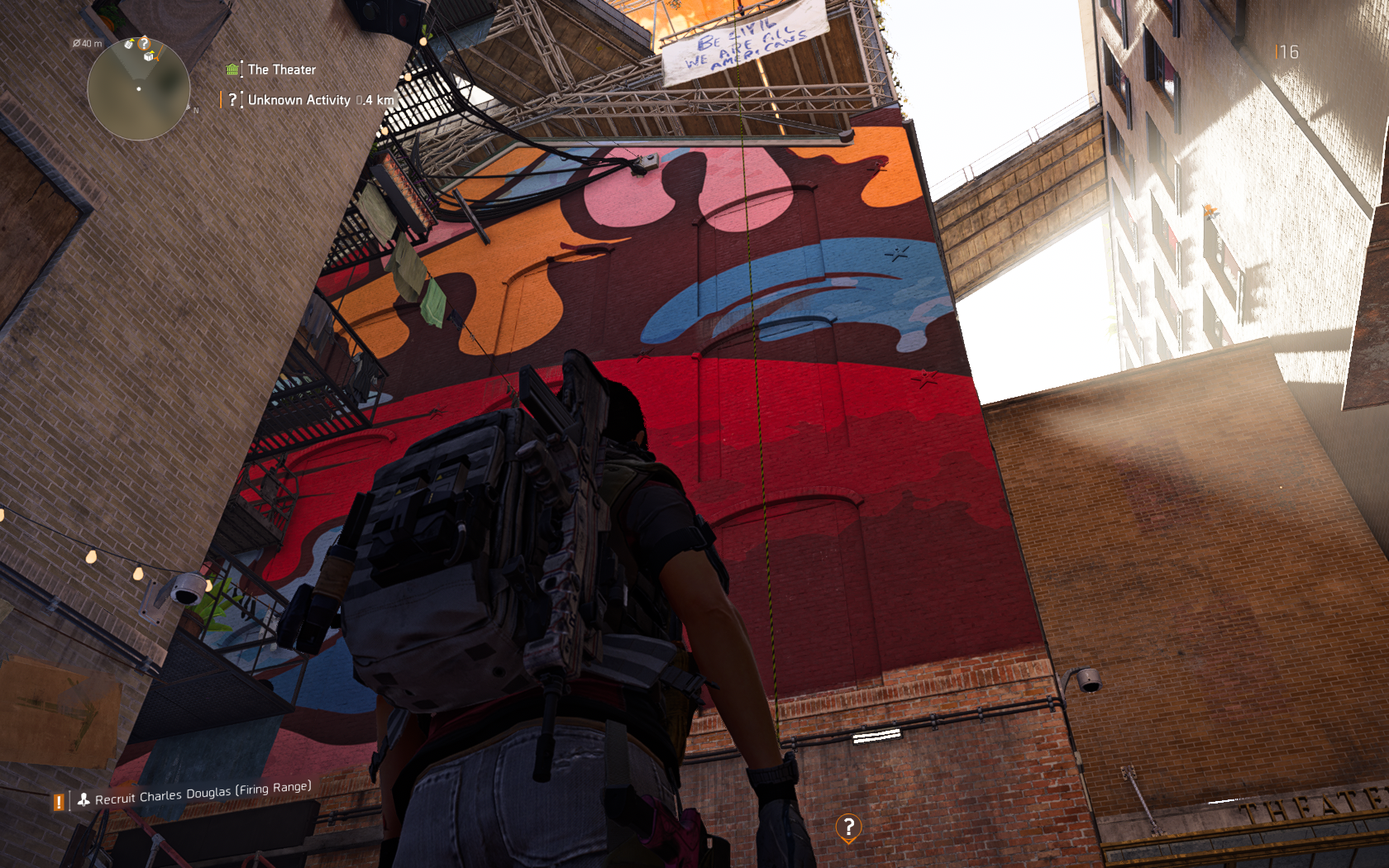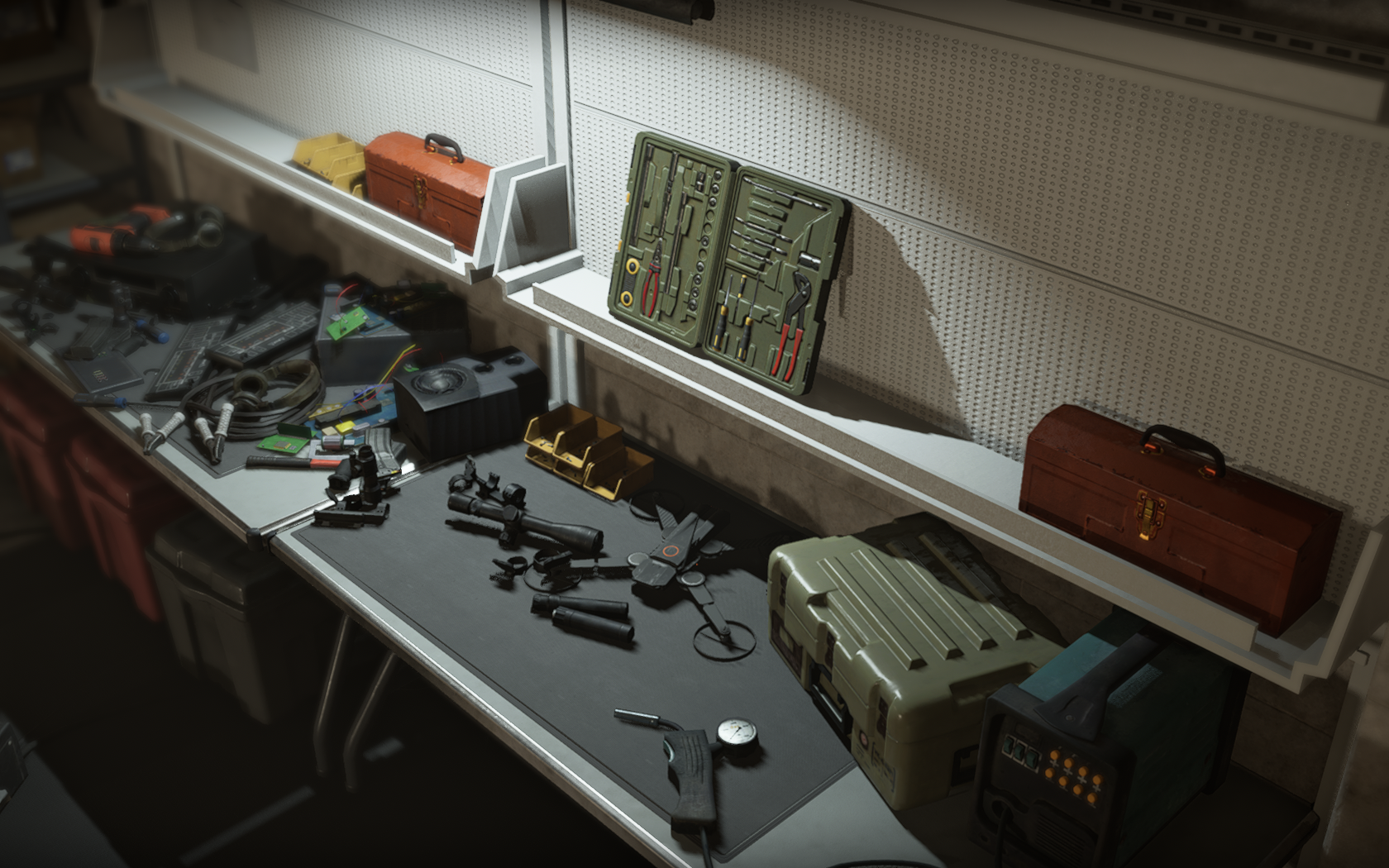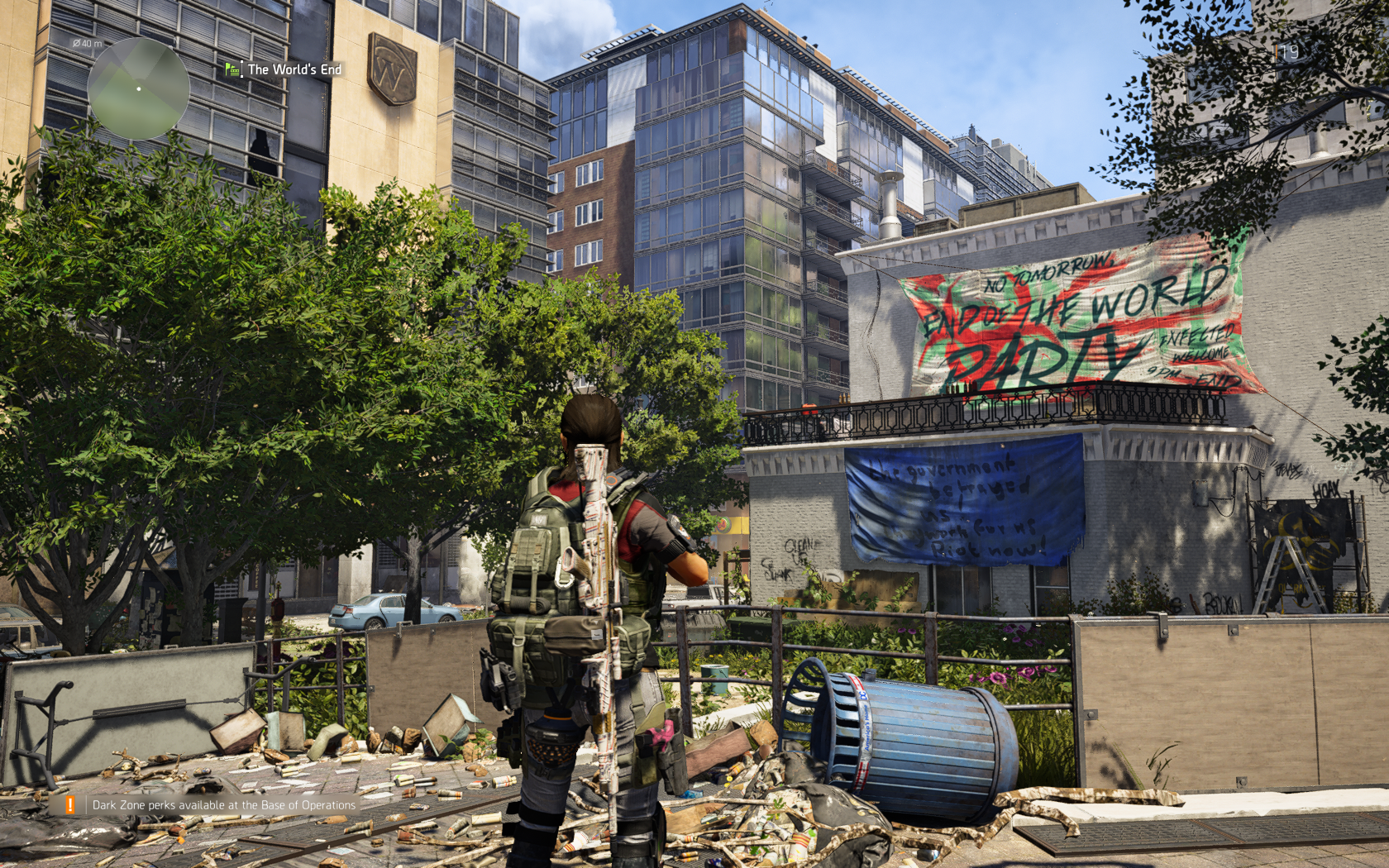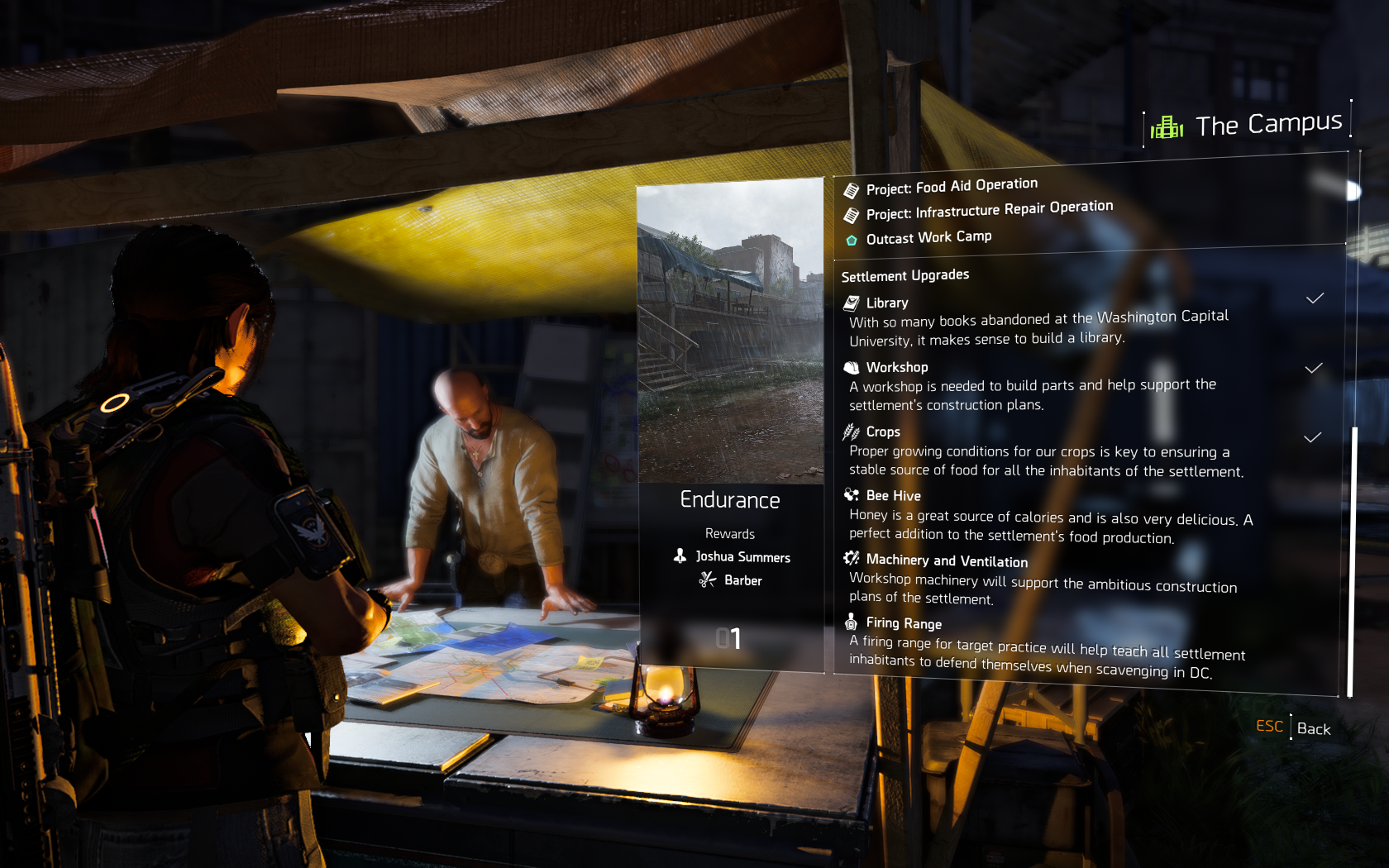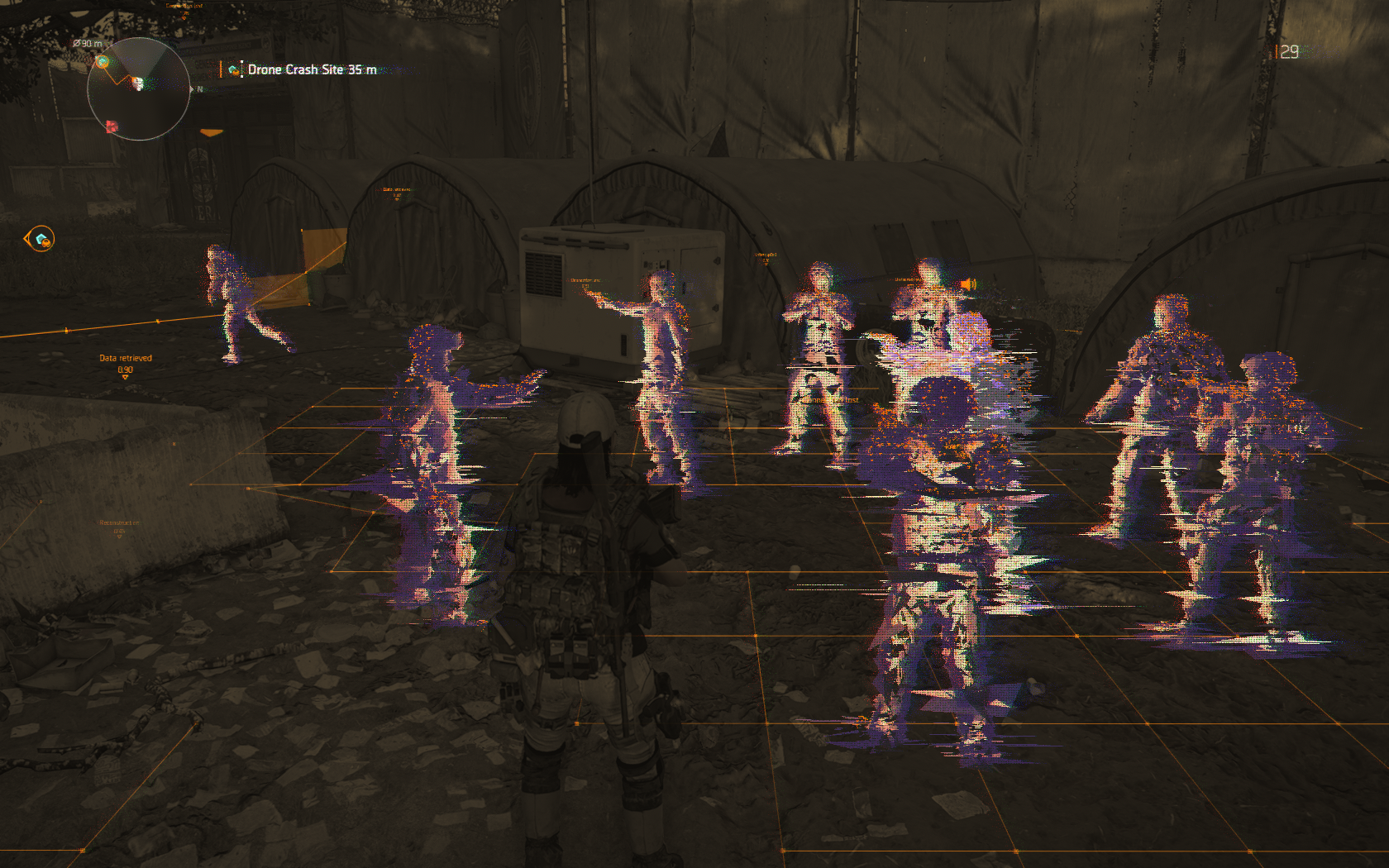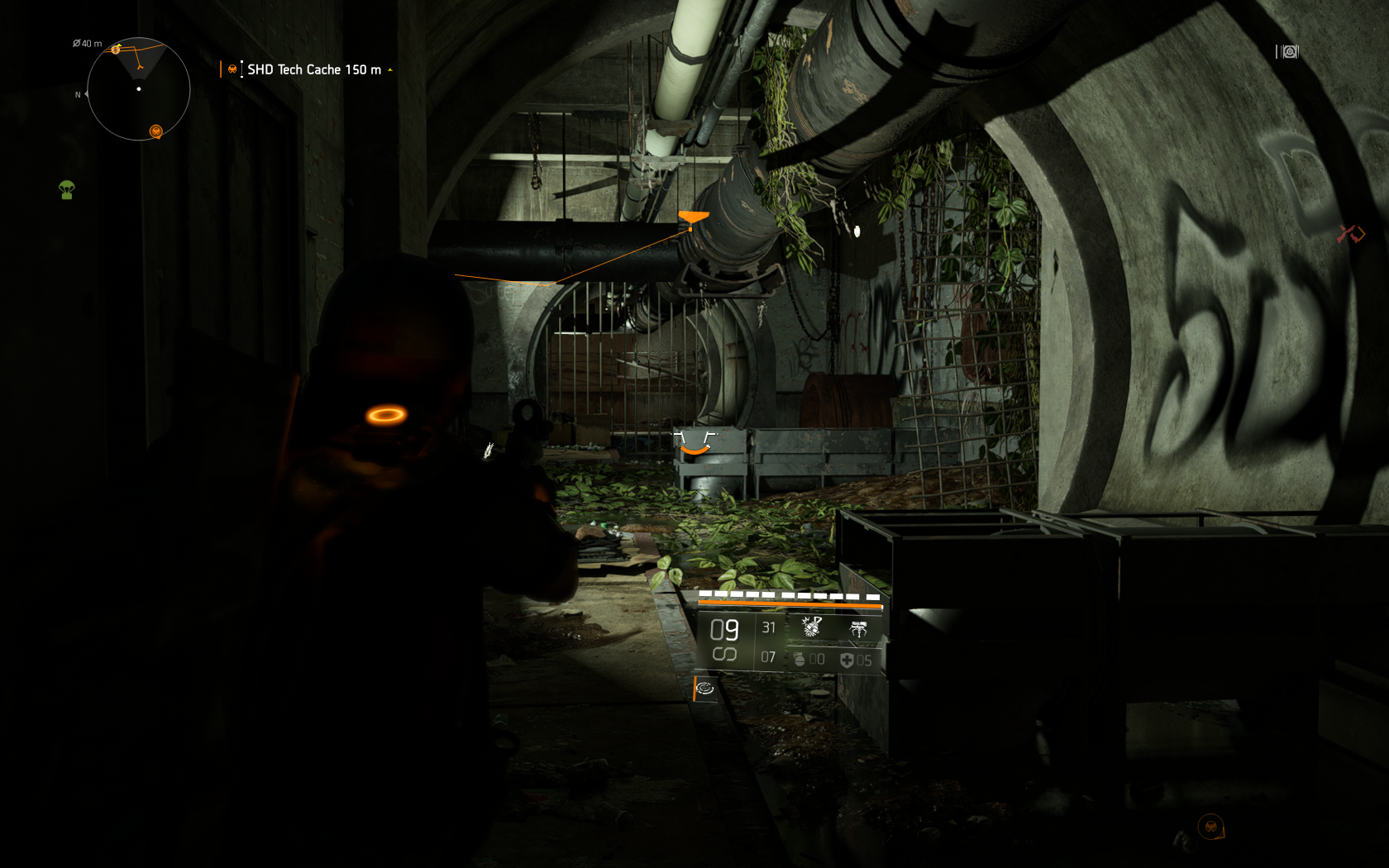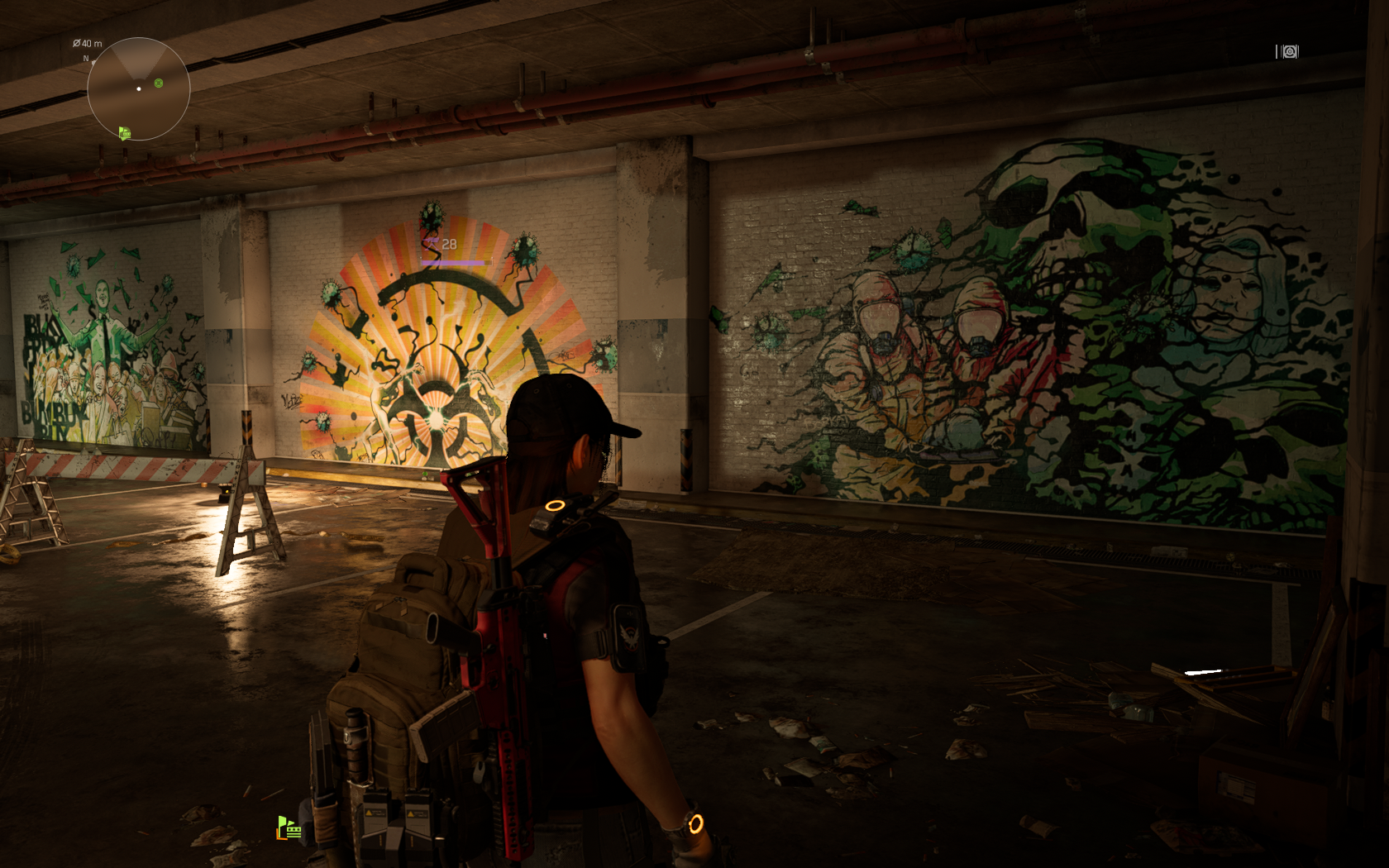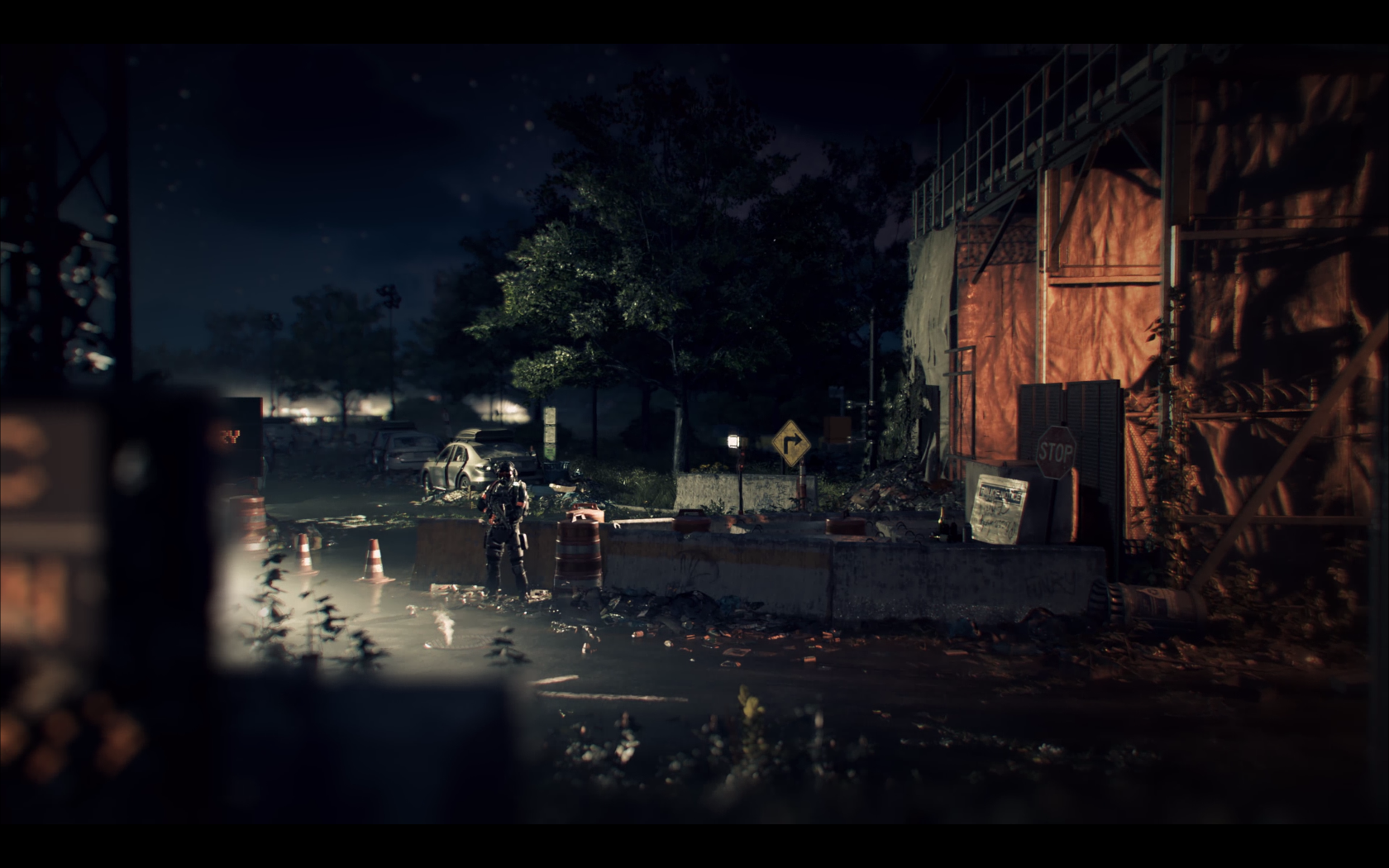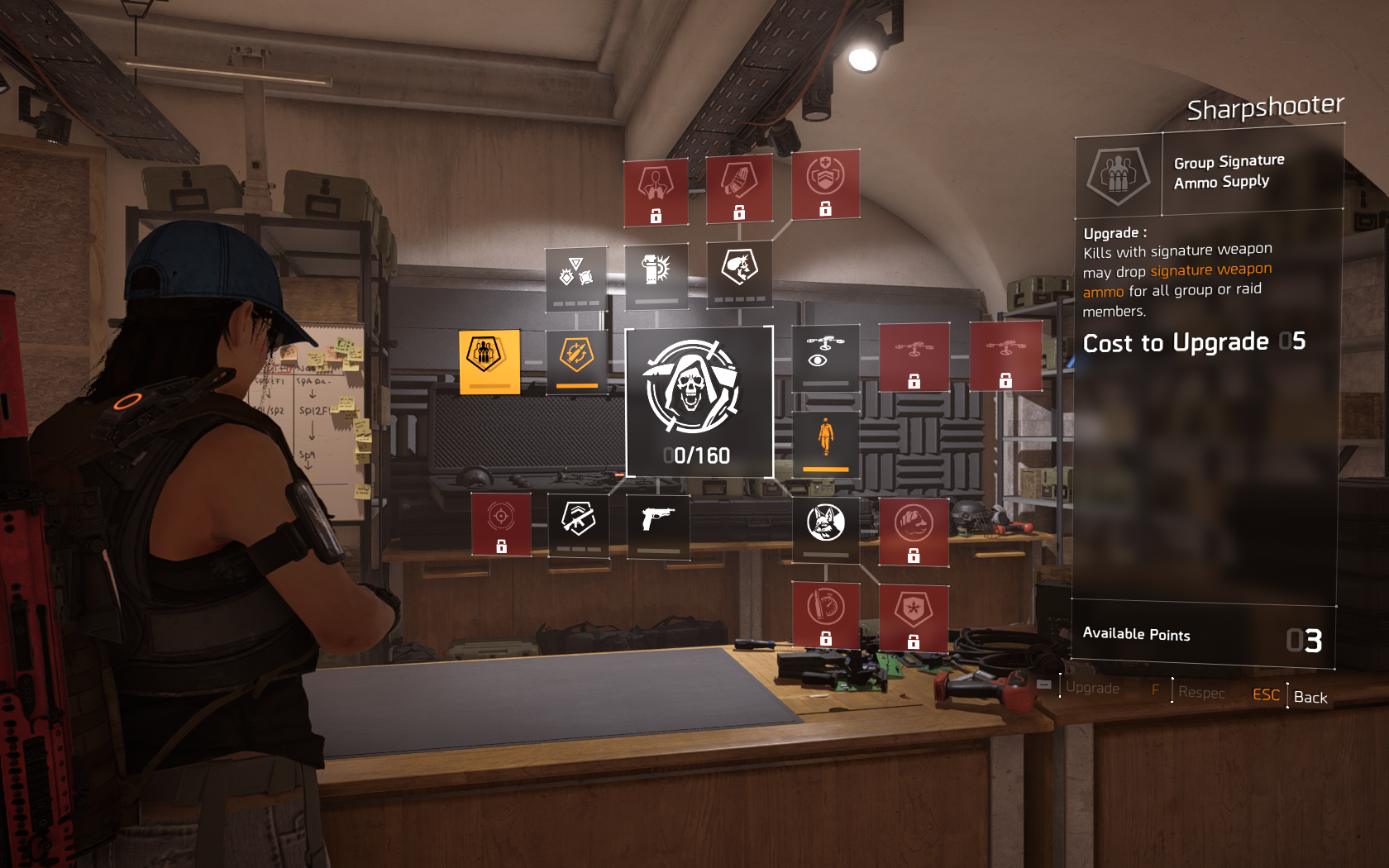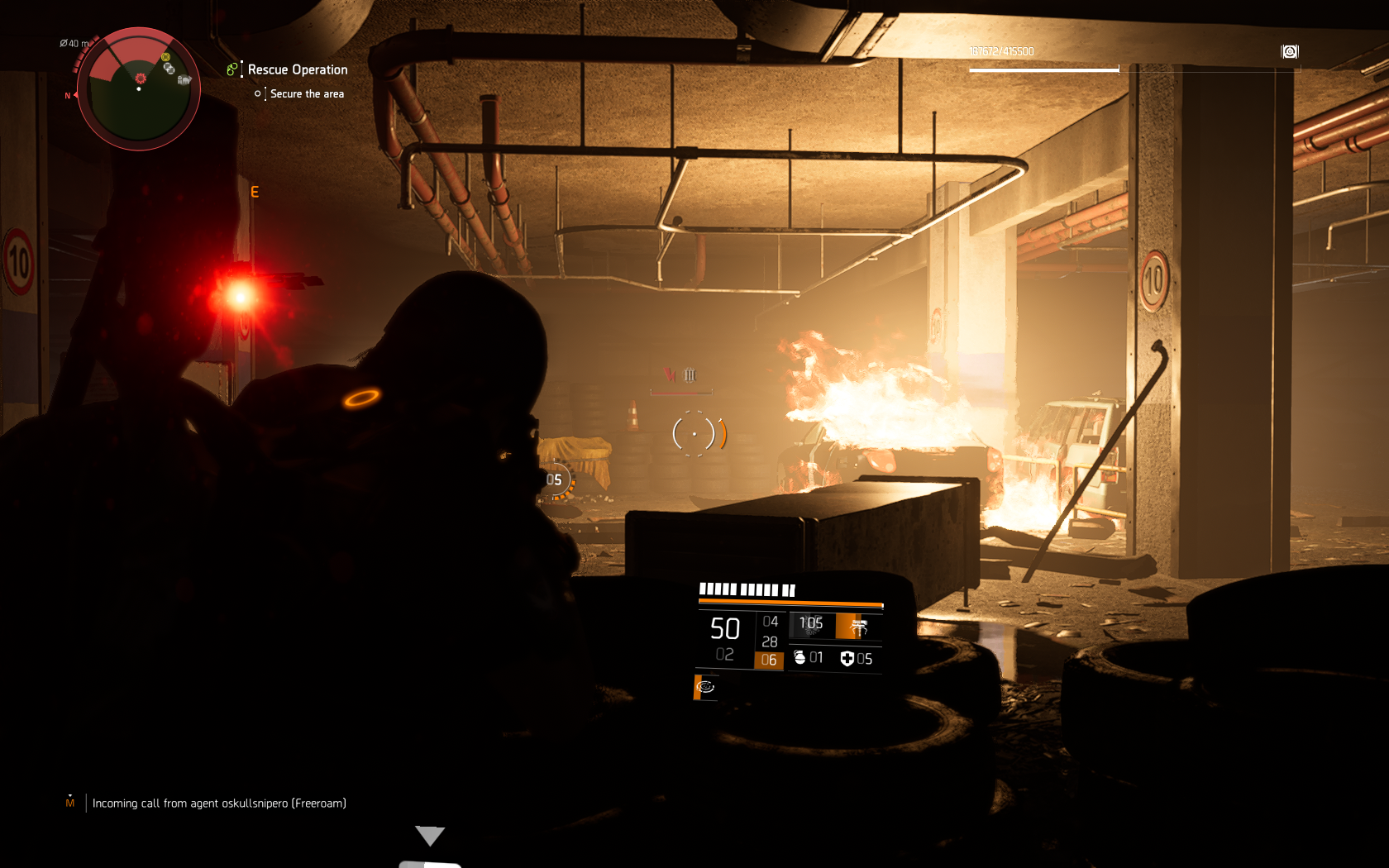It really blows me away how much dishonesty gamers are asked to tolerate compared to other forms of media. If you heard a track on the radio, downloaded it from iTunes and it was half as long with poor quality audio, would you accept that? Or if you went to watch the latest Marvel film and scenes from the trailer had been cut or actors replaced? There would be rioting in the streets. Yet time and again, gamers are shown a product in hype trailers that does not represent the final product.
Anthem is the most recent offender in this practice, with a gameplay experience that is shockingly different compared to what was promised and shown. I still remember watching the first Division E3 trailer and like everyone else thinking, this looked like a very special game. The stunning visuals, player controlled drones and even the way PvP was initiated at the end of the video. The final game was very different from these canned ‘gameplay’ demonstrations with a substantial visual downgrade, bugs/hackers taking their toll in PVP and end game that was woefully absent. At the time I swore I would never buy another Division game. I guess that shows in games journalism, you should never say never.
Light up the Dark
The Division 2 is set seven months after events in the first game and society seems closer to the brink of collapse than ever. We have now left the snow-encrusted streets of New York City and find ourselves in the more clement Washington DC. The first thing that jumped out at me was how alive the game world looks; there are sumptuous details and beautiful art direction dripping off every pixel. Like the 2007 film I Am Legend, nature is trying to reclaim the city in every conceivable way, with grass sprouting from cracks in the concrete and larger vegetation engulfing everything around them. You will happen across a whole range of creatures from stray dogs, foxes (that will slink under cars) and even Roe deer. The film of human decay is also everywhere in the form of litter and neglect. It is a world familiar and yet alien to the bustling city it is based upon. As many of the systems that human society is built on have broken down, many people have reverted to their more primitive instincts to survive.
On starting a new game you will find yourself in the character creation screen, which is basic but serves its purpose. I was happy to see I could make a male character that is the spitting image of Will Smith aka Dr. Robert Neville. Once done you are dropped into the opening sequence which kicks off with a cinematic. I’ll just get this out of the way, the main story campaign in The Division 2 is absolutely dire, both in its writing and delivery. Cut scenes lack any sense of cohesion and the characters that inhabit them are tepid cliches. The biggest problem is the fact that your character is mute and never says a word in conversations, instead just nodding along enthusiastically. This isn't the first time this technique has been used but for some reason, it really does jar here. I think the game would have been far better served by a better plot and a fully voiced player character. I have even wondered if Massive are almost going for a level of satire and in a way, acknowledging that the underlying story in these games is far less important than end game loot hunting.
I do think the best storytelling in The Division 2 is everything the game packs around the main story, such as the recordings you find and data echos to watch. Some of the videos you come across that show the enemy factions doing their thing are genuinely disturbing. If you are so inclined, there is a wealth of information to read and watch, which bizarrely feels hidden away in the progression tab. Just like the first game, there is also some incredible environmental storytelling, where you can just walk around a corner and see the remains of events now passed. Inquisitive agents will find more hidden away places where children have created their own den or a family have been hiding from the gangs that would surely kill them on site. Maybe Ubisoft wanted to avoid making things too grim because human corpses seem extraordinarily resistant to decomposition (or end up in a body bag). So the story is pedestrian at best and your character is a mute lurker who has about as much personality as a mashed turnip, but how does the actual gameplay pan out?
.
Paradise City
The game world is substantially bigger than New York and once again is divided into zones, each with their own level bracket. As the opening mission concludes you will be introduced to your central headquarters; which also happens to be the Whitehouse (very cool idea). The game does a very good job of letting you know where you should be heading next but without placing artificial walls in your path. For example, a new feature in The Division 2 are settlements, which act as hubs for that particular area. When you first arrive at a settlement things will be run down and people desperate, but hope is not extant. As you complete the various missions that are associated with each settlement, improvements will be completed which give both visual and strategic boons. These improvements are not only really satisfying to complete but also feed into the idea that people are starting to band together and rebuild society. New roof gardens, workshops, games for the kids and a whole manner of enhancements enrich the lives of the people you are trying to help. Specialists, who are now freed up, will also make their way to the Whitehouse and offer new services, such as a crafting bench or a bounty board.
Heading out into the city you will be presented with a plethoria of options. The main missions will, of course, progress the story allowing for skill unlocks and will provide a substantial confrontation. There are also side missions which will offer a smaller (but no less fun) distractions. These can be anything from getting the water turned on to saving someone’s kid from a local gang. You will also see question marks pop up on the map and these events can be many things, from a propaganda tower that needs shutting down to a public execution you can try to avert. These events add a great deal of diversity to your gameplay loop as they can spring up all over the place. You will also come across control points in each area of the city, which are strategic locations that offer the occupiers a place to rest and gather resources. When these are occupied by an enemy gang you must whittle them out and also use your flare gun to call in the friendly faction to hold it once you’ve moved on. Winning these points gives you access to big loot rewards and also lets you fast travel to them whenever you wish. You can also donate food, water and components that you find around the city, which in turn gives you a searching buff and helps the civilians defend that point.
One thing I absolutely adore about the Division 2 is how dynamic the world is and it’s clear that the developers have put a lot of work into how NPC’s (both friendly and not) react. Just by walking with a friendly gathering party, they will pick up speed and behave in a more confident manner. When taking a control point I had just called in my allies but then died. After respawning at a nearby safe-house, I could see that the conflict was still ongoing and I was able to make it back just in time to help turn the tide. What was even more impressive was that just as things were starting to go sideways, one of my allies jumped on an unoccupied minigun and started mowing down the enemies. Groups of survivors will leave the control points to gather vital resources which can be seen moving around the map. These convoys can be attacked in real time and that means you can also help them when you get the chance. If you are engaging enemies and a group of friendlies are passing they will run over and help you out. Similarly, when you enter the later parts of the game, enemy patrols will actively move on your control points and try to take them back. You can check their route and intercept them with an ambush. Even when reaching World Tier four there are new mechanics being added to the map, such as activities linking to enemy control points which if completed, offer a tougher challenge and better rewards. In this way, the map becomes an ever-shifting chess board that both bolsters the diversity of the gameplay loop and also helps create a sense of evolving purpose.
Shooting the Crow
So superfluous piles of loot are present and correct, but what about the combat? One of the major criticisms of the first Division game was that enemies felt like bullet sponges, which was compounded by the fact these were just normal human beings. No matter how tough someone is, in reality, a shotgun blast to the cake hole will always be fatal. While this system does remain for the sequel, it has been much more improved and refined. Most low-level enemies can now be taken down with a few well-placed bullets, which is far more satisfying. The developers reported that due to technical limitations they could not have as many enemies running around in the previous game, which led to them being tougher. Now with a better-optimised game engine, there are more enemies (and allies) on screen at any given time. Death animations and the way newly perforated goons slump over the scenery is really satisfying. I love how the environments react to combat, with debris being shot off the cover you’re hiding behind or explosive canisters being a good way to take down a large group; combat is so damn fun in The Division 2.
Pretty soon you will see tougher enemies arrive and these Kevlar-clad steroid factories look something akin to the Mk1 Ironman Suit. There have also been thoughtful changes here; these being weaknesses to exploit which expose the far more vulnerable tissue below. You can also damage an ammo belt forcing them to reload manually or ignite an ammo pack which will damage everything around them. Each faction has their own personality with unique ways of throwing hurt in your direction. My only substantial criticism for the bigger encounters is that the boss fights don’t feel very inspiring. I don’t expect enemies to have four arms or laser eyes, but not a great deal has been done in terms of the fight choreography. So for example, one boss could jump in an armoured digger and you have to disable it before he/she brings the building down on top of you. There are endless possibilities that could be employed to make these fights more interesting and only now in Tidal Basin are we starting to see more interesting bosses with the Wyvern fight.
A noticeable improvement over the first game is the enemy AI and the way they will attack you. Getting settled in behind a good piece of cover will not cut the cheese in this game because your adversaries have many ways to flush you out. Molotov cocktails, grenades and flanking manoeuvres will all prise you from your hidey hole and force you to find another safe area. This is where the level design really starts to show its strengths and keep you on your toes. Sometimes a doorway will fly open behind you as enemies pile out or there could be numerous layers that cover the path of melee adversaries to you. The bottom line is that even on the easier difficulties, fights are challenging, tactical and often exhilarating.
You have two main weapon slots and a sidearm slot to fill with your favourite pop gun. My usual setup is having an automatic weapon in the first slot and a powerful single shot rifle for the second. My trusty Desert Eagle .50 has also done me proud on many occasions. The one weapon type that does feel off is the shotgun, simply because in most other games a shotty blast will devastate foes but not within this damage model. On top of your weapons, you also have a nice selection of skills to choose from. There are eight skills in total and each one has a submenu of variations. So the turret, for example, will have a standard machine gun, a more powerful sniper variant and also the devastating flamer. Players unlock these skills by completing the main campaign and also by picking up SHD crates scattered around the city. While some of these skills feel like they overlap a little too much, they are fun to play with and give players another layer of customisation. Once at level thirty you can also unlock special weapons that offer a powerful attack but run on rare ammo (even rarer after the update). While I do like using these weapons I don't think they make players a unique as Ubisoft were hoping, although the well fleshed out tech tree for each really helps.
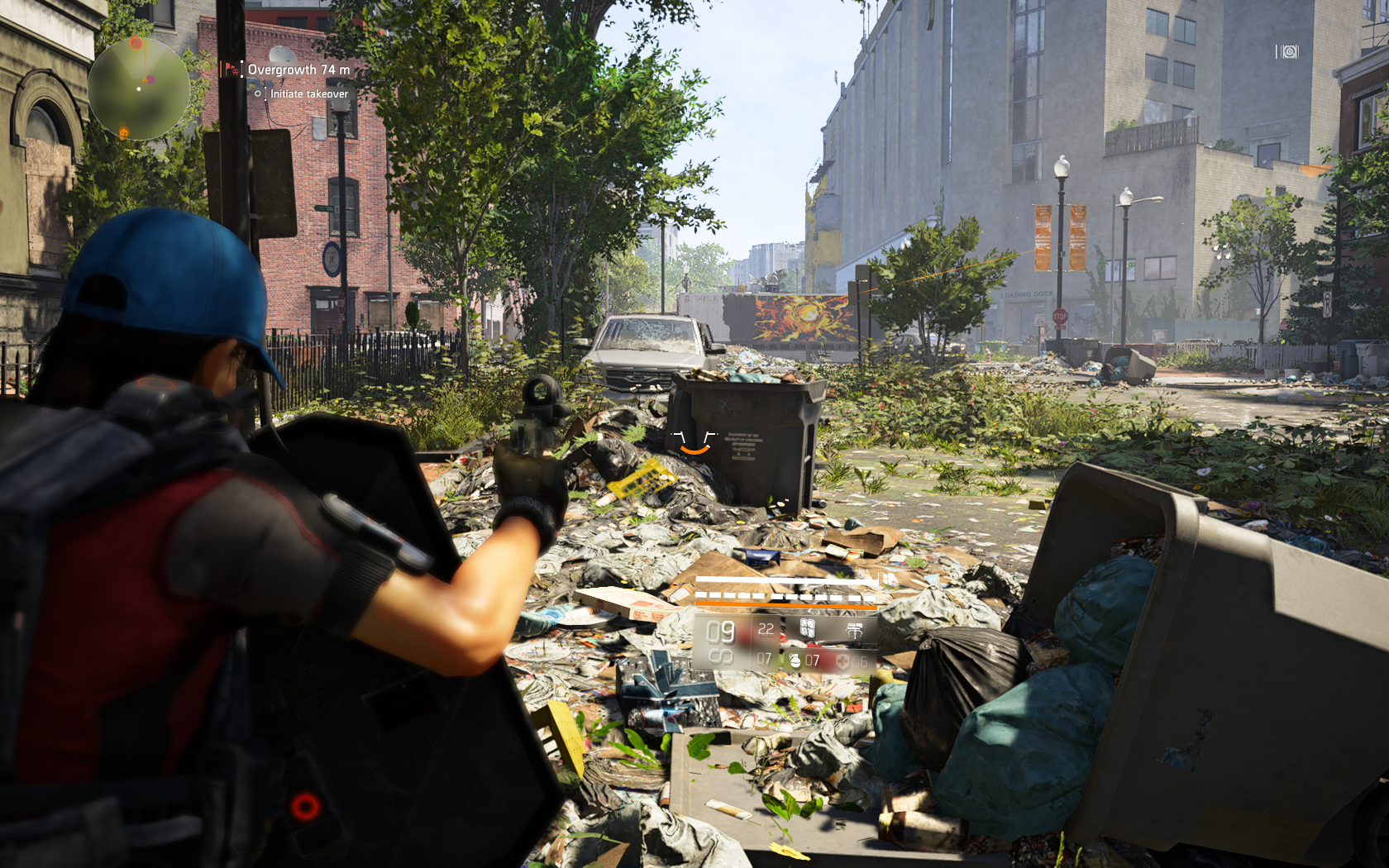
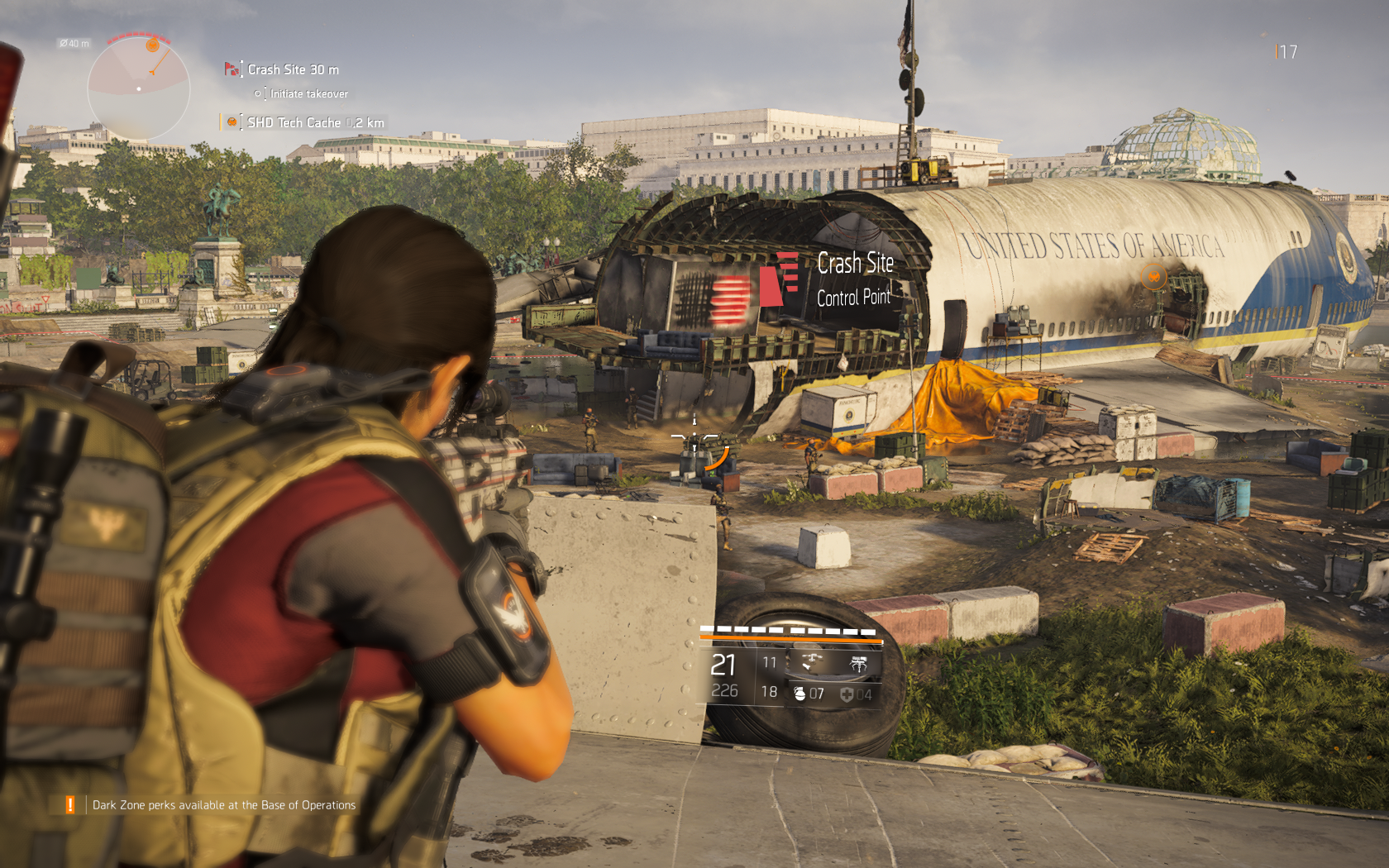
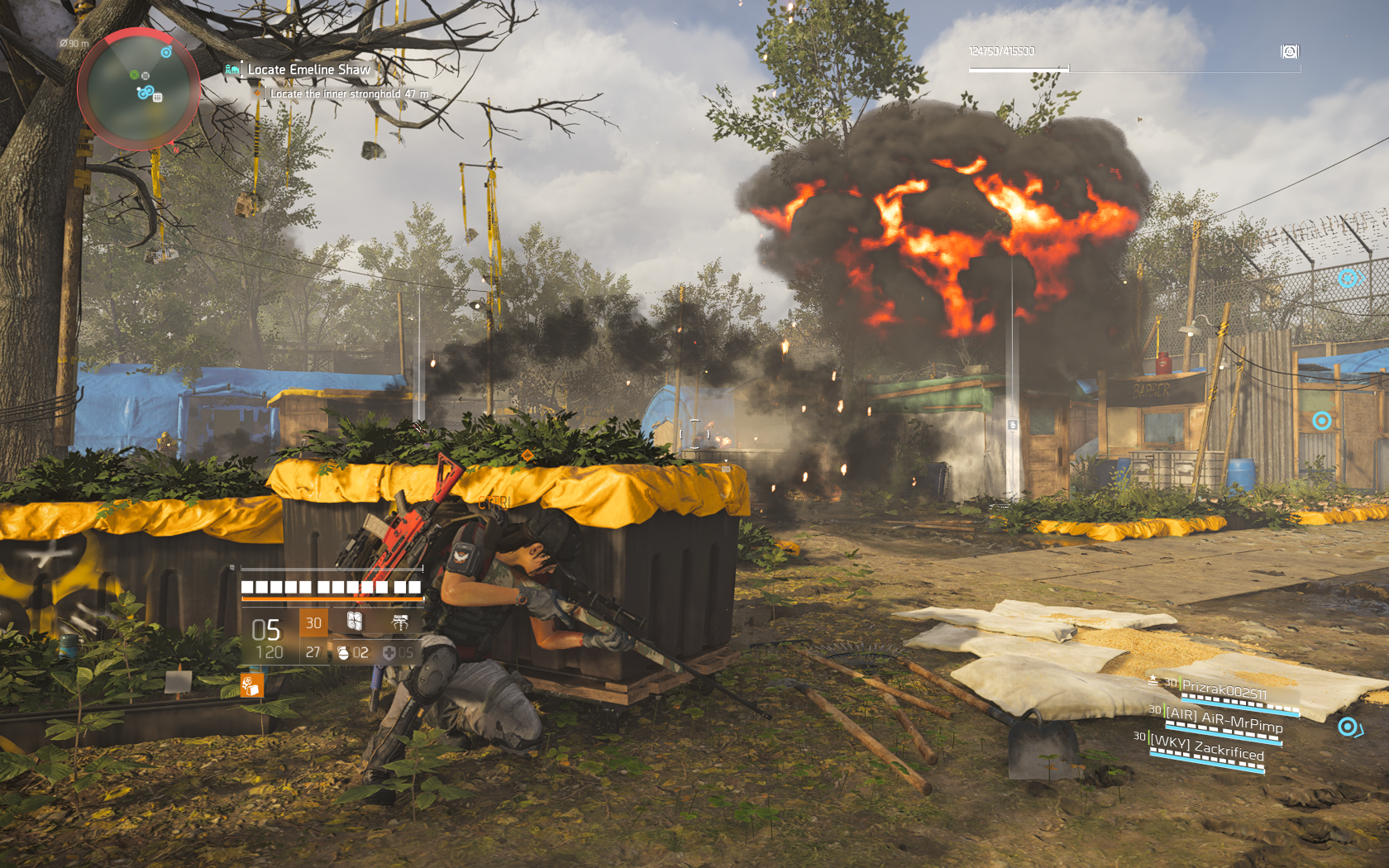

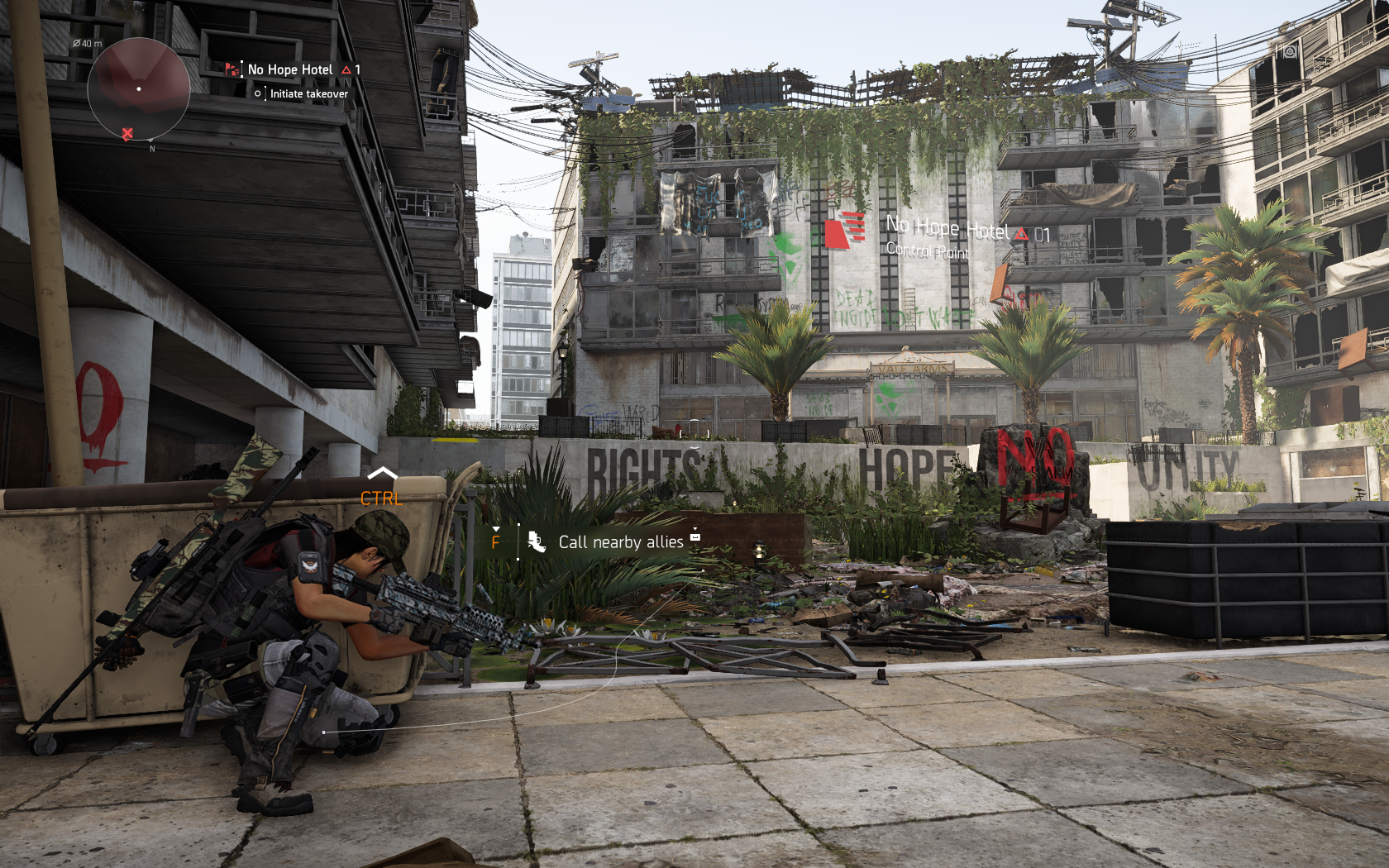
This is my rifle, there are many like it but this one is mine!
Somebody recently asked me, when was the last great looter shooter? Interestingly, it took me a while to come up with a solid answer and in the end, my nomination was Borderlands 2 (which released in 2012). Sure you can talk about Destiny if you like but in my opinion, most of the big studios don’t really know how to make a rewarding looter shooter. I believe The Division 2 is the first worthy successor to the aforementioned classic because it makes dropping loot exciting again. As you make your way through the game world there are a plethora of containers to rifle through, from backpacks, ammo boxes, suitcases and so many more. You get loot from completing missions, from capturing control points, from pretty much every aspect of the game and very quickly you will be literally swimming in gear, weapons and mods.
Considering tht the guns are based on real-world designs, they do manage to keep most of them interesting. Weapons will feel noticeably different when fired, down to bullet spread, recoil and even sound effects. On top of that, there are numerous weapon mods which can drastically change how a weapon behaves, such as scopes, grips and various magazines. I love how in the latest update they have changed the mods so they no longer reduce a stat as well as the improvement, it’s now just a clear buff. If that wasn’t enough, weapons can also come with their own traits and these are not just stat padding. Some perks include creating ammo when holstered or large damage buffs to enemies on fire. There are even different manufacturers to consider, which will add a set bonus if you are using three of the same set.
I do think, especially once you hit level thirty, the flow of loot becomes the impedimenta of people who play a lot. Once stash space is maxed out you will have a hundred and fifty slots which sounds like a lot, but this can fill up fast when you add mods into the equation. You can either sell surplus items for money, break them down for crafting materials or keep them for project donations. The later projects actually require items from specific gear manufacturers and I do tend to keep more items than I probably should, just in case I need that particular brand of kneepads. Like the first Division, there are many cosmetic items that can be layered on top of your character to give them a different look. In New York, most agents invariably became the same sea of beanie wearing hikers, but here there seems to be a better pool of choice. There are microtransactions (of course there are) which you can pay real money and unlock clothes, emotes and so on. I’ll be honest, none of the cosmetics on offer made we want to part with real cash but that’s down to personal preference.
Backseat Game Dev
I’m going to start including this section in my reviews when I have enough solid ideas that I think would improve the gameplay loop. The backseat game dev in me was working away as I played the Division 2 and so here is my wishlist, you know, just in case any of the development team at Massive Entertainment are readers. I would love a faithful hound to accompany me on my jaunts through the city. My comparisons to I Am Legend obviously got me thinking of this but there are wild dogs gadding around the city streets. These canine companions could be used to find loot or maybe even have their own skill tree for aiding you in combat.
Ubisoft has established many good third-person action games over the years and a good wedge of them have stealth mechanics. I would have loved to see a stealth mechanic at play in The Division 2 which offered me the option to take on groups of enemies from the shadows. Day and night could then offer a strategic effect on visibility, as would bad weather for muffling screams or obscuring your backstabbing antics. Similarly, silencers could be used to pick off lone guards before moving in for the main group. As I have said, combat is top draw in this game but I think stealth would have really helped mix up the street warfare.
When you enter a settlement or safe-house you can often hear a radio station blaring away in the background. I think being able to tune into the radio stations while you play would have been a great feature. Some nice tunes to play to are always welcome but your recent actions could also have been talked about, reinforcing your connection to the game world and events in it.
The Twilight Zone
One of my favourite parts of the first Division was the Dark Zone and yet this time around I have largely ignored it until a few days before publishing this review. I didn’t plan to play the game this way but I suspect the wealth of PvE content had a lot to do with it. This time around the Dark Zone has been divided into three separate areas, each has its own distinct design. So for example, the east zone has wide open streets and spaces, which encourages snipers and picking players off from afar. Yet if you head into the south zone players will find a far more claustrophobic area where shotguns and burst fire will be king. Each zone will host up to twelve players per session (this needs to be increased) and the game will try to match groups sizes which of course helps solo fighters. Each Zone will require you to complete a PvE mission which helps explain the mechanics while avoiding actual players gunning you down. Like before, you gain Dark Zone levels just by playing and this gives you access to the perks. There are a lot more things going on in these areas now, such as landmarks clean out. In an effort to deal with spawn campers, turrets now attack rogue players near spawn points but these one-shot wonders need to be toned down both in damage and range.
Unfortunately, the current Dark Zone in The Division 2 is a huge disappointment for me and I feel like the developers have forgotten what made it feel so good in the first place. When you enter a normal Dark Zone all players and mobs will have their weapons normalised, which is a mechanism to give lower geared players a fighting chance. While I can see how this idea came about, many fans of the Dark Zone saw it as the end game activity that you would play once all the PvE content had dried up. The trouble is by negating the improvements a player has by finding better loot, you take away one of the core drives to play the game. One of the three Dark Zones will be occupied every forty eight hours and here normalisation will be disabled, which does give keep PvP players somewhere to shine. Another change is that most of the loot you find in these zones will not be contaminated and you can just put it straight into your inventory. Higher grade items will still need to be taken to one of the extraction zones before they can be claimed. These areas were always wonderfully tense in the previous game, like watering holes in the desert attracting predators hungry for a nice snack. I do feel that In a game already swamping you with loot drops they didn't need to make this change and again, it feels like it was made to make PvE players feel more at home.
I think the overall problem with this new Dark Zone, is that the developers have tried to make it more of a hybrid between PvE and PvP. So players who love the former still have an incentive to wander into these areas and get some rewarding gameplay. Unfortunately, the crossover weakens both the PvE and the PvP because it doesn’t quite know what it is. For example, when you go rogue (one of the three states you can enter) your local voice transmission is now turned off, which I assume is to shelter all the snowflakes out there from hearing bad words. I do understand that there were some fairly toxic players in the Division, but you can quite easily just turn off VOIP in the settings. For me, hearing other players talk (and rage) was all part of the experience. I also feel like while there are now three Dark Zones, they are all way too small and I would far rather have had two larger areas. In my opinion, the Dark Zone should feel like this forbidden area on the edge of the city, that almost surrounds the PvE parts of the game like a dark forest around a medieval city. Despite the issues I have raised here I can see that these changes have been born from a wish to improve on the mistakes of the previous iteration of the Dark Zone. It’s just unfortunate that these PvP arenas in The Division 2 are the one area that seems like a backward step. Yet given how successful the overall game has been, I do hope these issues are looked at in future updates and content.
End Game
Once you have hit level thirty and beaten the game's story what is there to do? A great deal as it turns out which is certainly an improvement from the last game. At maximum level, you will start to work on your gear score and world tier level. A new faction called the Black Tusk will invade Washington DC and the whole game is turned on its head. The map you have been happily turning green for the past thirty or so hours will now be washed with red once more. The streets are far more dangerous to wander around, new threats like gigantic drones are abroad and the Black Tusk themselves offer a significant challenge. You must now replay all the missions of the campaign, which have evolved to ‘invaded’ and will play out differently than before. Each time you clear a sector of the city your world tier will increase along with the gear score of loot that drops. Your gear score will be an average of all the items to have equipped and thus you must meet the threshold for each of the invaded missions.
There is yet to be a developer who has made a title with endless endgame, at least, endgame that keeps things fresh every time you progress. Eventually, the story will run dry and you must either get comfy on the treadmill of endgame grinding or find something else to do until the next substantial update. I wasn't expecting The Division 2 invent procedural storytelling, but I also didn’t expect its endgame loop to be so fleshed out with things to do. Some nights I have just logged on to wander the streets, helping people, picking fights and seeing the sights. Other nights I and a group of friends will do a string of bounties or a few challenging missions. As I type this the next stronghold (Tidal Basin) has just dropped which will allow those most hungry agents to breach World Tier five and seek named armour sets. With this update, there has also been a decent amount of improvements and refinements. Then there is eight-person raid heading our way soon (April 25th!) as well as a fairly impressive chain of new content over the year. The Division 2 has a wealth of content and not only that, it’s mostly of a very high quality.
Is it PC?
As I have mentioned, The Division 2 is a gorgeous 1:1 recreation of Washington DC. Just walking around the city streets is an experience in itself and I suspect this is quite strange for people who actually live there. The game performs very well on PC and on my 980 GTX I can play the game on the highest settings in 1080p. On higher-end machines, this is one of the best looking games on PC right now and the art team should be applauded. The day and night cycle is perfect offering some very atmospheric scenes, such as seeing the pink sky of dawn reflecting in the water around where Airforce One now lays in ruin. Weather effects have also been realised with a great degree of success and the thunderstorms are especially dramatic.
There are a few notable bugs flying around the place and I’m not talking about the awesome looking bees and dragonflies. So far I’ve found five, fairly obvious invisible walls in the DC area and have been surprised they have not been fixed yet. Luckily they don’t impede you from getting around too much. I have also seen enemies do some pretty impressive manoeuvres including climbing ladders instantly or become invincible for a period of time. The only time I have really been caught by a serious bug is once getting completely stuck on a ladder and another where all textures disappeared followed by a hard crash. There was also a potentially game-breaking bug where skills would disappear after being deployed, but this now seems to have been fixed. It’s also worth noting that the clan system works really well, offers players incentives to work as a team and gives members weekly goals to work on. Overall this game runs very well on PC and is by far the best version of the game.
Away from the campaign cut scenes, the voice acting isn’t all that bad. NPCs you meet in the streets will engage with you in various ways and enemies will send a whole catalogue of shade in your direction. Guns mostly sound meaty and solid, with plenty of detail in with the individual effects. The game also does a very good job of using sound to let you know what is happening around you, even your weapons magazine starts to sound different as it gets near empty. When away from conflict, the sound is equally good, a distant dove cooing as the sun beats down on an almost silent cityscape or a light breeze making a ruined flag billow in the wind. Equally, running into a building to shelter from a thunderstorm and hearing the roar of the deluge shift to a muffled hum outside is fantastic.
Conclusion
Anyone looking at a gameplay clip for the Division 2 could be forgiven for thinking that Massive Entertainment has just changed the setting and added a few new skills to play with. The truth is that the developers have implemented some substantial elements to the gameplay loop that make fights less about shooting a health bar down and more about combat tactics. Like an elaborate game of chess, players must now actually manoeuvre around their opponents and think three moves ahead. In addition, players are also given meaningful rewards for their efforts in the form of shiny loot. Even if you play this game for the thirty or so hour campaign and walk away, I feel like you will have gotten enough to justify a purchase. However, for those who are enjoying the ride, for once, this really is just the start of your journey.
It is unfortunate that the Dark Zone is the one area of the game that lets the experience down a little, but I think with a bit of tweaking Massive Entertainment could make some huge improvements here. The developers have not only learned valuable lessons when updating the first game but have also applied this experience to the next. There are so many well-designed layers folding upon each other it’s hard to see anyone being bored in this game and I’ve not even talked about bounties or the many hidden items around Washington DC. If you are looking for a well-polished looter shooter that actually delivers on the hype, I can wholeheartedly recommend you pick up the Division 2.
I have held this review back until I’d played a significant amount of endgame and seen how Tidal Basin (and other post-launch updates) would pan out. I wanted my review to serve the people who had wisely held back to see if history was to repeat itself with this well-hyped sequel. This is one of my bigger reviews so thank you for taking the time to read my work. You can always see my new content announced on Twitter @riggedforepic


